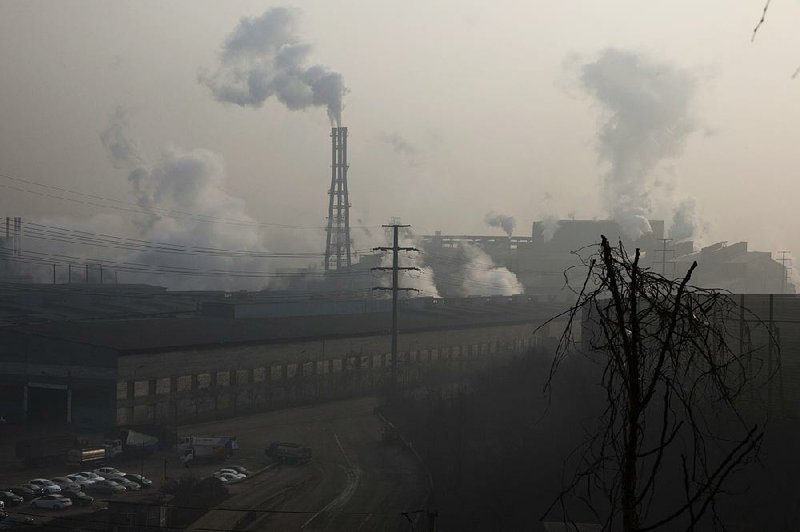Faced with global condemnation for flooding world markets with cheap steel, China announced last year that it had implemented ambitious cuts in steel capacity.
But a new report by Greenpeace East Asia and Chinese consultancy Custeel says that number was largely smoke and mirrors. Many of the plants China said it closed down were already idle, while production was restarted elsewhere and brand new plants opened.
In fact, China's steel industry actually saw a net increase in operating capacity equivalent to twice Britain's total capacity, the report concludes.
The report could inflame China's trade relations with the United States and the European Union, which have repeatedly accused China of dumping cheap steel abroad and damaging their own steel industries.
Tens of thousands of European steelworkers demonstrated last year in Brussels and in Germany against cheap Chinese steel.
"Impressive as they seem, China's current steel capacity reduction targets won't suffice to limit oversupply, as local governments maneuver to shield zombie steel mills and minimize the impact of the policies," said Lauri Myllyvirta, Greenpeace global coal campaigner.
"Global markets are awash with steel and the people of northern China continue to choke on the industry's major byproduct, smog," Myllyvirta added. "Increasing steel capacity makes neither economic nor environmental sense."
China, which accounts for half the world's steel production, has a total capacity of 1.2 billion tons. It has announced plans to eliminate 110-165 million tons of annual production over the next five years, but cutting capacity has so far done little to rein in output and exports.
Last year, it said it had far exceeded its initial target to cut capacity by 50 million tons, recording cuts of around 94 million tons.
But the report says that 73 percent of the announced cuts in capacity were already idle -- in other words, the plants were not operating. Only 25 million tons of cut capacity involved shutting down production plants that were operating.
At the same time, some 59.5 million tons of capacity were restarted, and 13 million tons of new operating capacity came online.
That left China showing a net increase in operating capacity of 40 million tons last year, a figure that is consistent with a 3 percent increase in steel production in the second half of last year.
It is also consistent with evidence of a deterioration in the air quality in Beijing in the second half of last year -- the steel industry is a heavy consumer of coal and contributor to air pollution, and most of the restarted capacity came in the industrial provinces near the capital, Shanxi, Hebei and Tianjin.
"Cutting already idle capacity is not enough to win the battle to tame the steel industry and the central government's much-touted 'war on air pollution,'" Myllyvirta said.
With the economy slowing, national and provincial leaders have been under pressure to bolster employment and maintain social stability. A new round of debt-fueled spending on infrastructure, combined with measures by local leaders to protect local industries and continued bank lending to so-called zombie companies, pushed up steel prices and output.
The Obama administration imposed heavy anti-dumping duties on certain types of Chinese steel and aluminum, and experts say the Trump administration could take even stronger measures, with the president campaigning on a promise to rebuild the country with American steel -- even though he was reported to have used Chinese steel for his own construction projects.
At his nomination hearing to become commerce secretary, Wilbur Ross, who has a background in the U.S. steel industry, also said the United States need to look more closely at anti-dumping tariffs on Chinese steel and aluminum.
According to a document seen by Reuters, the Chinese Ministry of Environmental Protection does have a plan to further cut steel and aluminum output as well as banning coal from some ports to curb the growing smog problem. The report published Monday includes cutting steel capacity in half across five regions during the winter, but the policy is still in the planning stages and it is far from clear if it will be implemented.
Business on 02/14/2017
